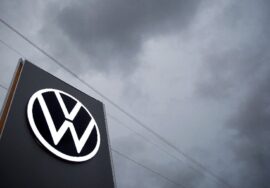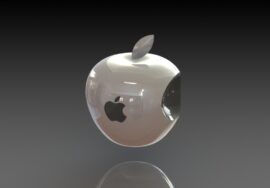

The market capitalization of a company?
Shares of Elon Musk’s company, Tesla, on November 4, 2021, were sold at $ 1243.49, the highest in its history. Just a month earlier, the company had reached $ 1 trillion in market capitalization for the first time, ranking among the few companies such as Apple, Microsoft, Alphabet and Amazon, which have a market capitalization of over $ 1 trillion.
Market capitalization (or market value) is one of the methods that investors use to measure the size of publicly traded companies. To calculate the market value of the company, you multiply the number of all the outstanding shares of the company by the current share price. So, the value of the company depends on the market price of the share and increases/decreases in proportion to the increase/decrease of the share price. If the company’s share price falls, its market capitalization will fall, and conversely, if the stock price rises, so does its market capitalization, under the assumption that the number of shares outstanding remains unchanged.
It is not easy for an ordinary investor to determine at what point Tesla crossed the 1 trillion threshold because data on the number of shares outstanding are available only on a quarterly basis. Over a quarterly period, the company may increase the number of shares by issuing new shares to new investors, or it may reduce the number of shares by purchasing its own shares, known as a buy-back.
Investors holding preferred shares with the right to convert into ordinary shares may exercise this right and thus increase the number of shares outstanding. On the other hand, the company may have surplus cash which may not need to be invested so it buys back its own shares.
Anyways, the formula for calculating market capitalization is simple. You only need two data: the number of shares outstanding and the current share price. Just multiply them and there you have it, the company’s market capitalization.
Assuming the number of shares outstanding was 1,004,264,852 (as stated in the third quarter financial report) then the stock price on the day Tesla reached $ 1 trillion should have been around $ 996.
Why and how do investors use market capitalization?
When investors consider buying stocks, they usually consider the risk associated with buying as well as the potential increase in stock price. The size of the company must be taken into account because it shows the potential for future growth and shows how much risk of failing is there. In general, investors estimate that companies with low capitalization have more potential for growth (Tesla had started with 13.3 million shares at a price of $ 17/share) but on the other hand there is a high risk of failure because they are unknown to the market, probably new companies or because they operate in a highly competitive market. As per the companies with high capitalization, investors do not expect much growth, but they are more confident that the chances of the company failing are very small, even when the economy goes downhill. Besides, such companies have very low or no competition.
The decision to invest in one company or another may not be the right decision if we take into account only their stock prices. If you do not take into account the specifics of the capital structure of the companies you are comparing, then market capitalization gives you the opportunity to compare the relative size of one company against another.
For example, the share price of the Swiss company Nestle is currently $ 132 while that of the American company Home Depot is $ 349 per share. Although much higher priced, Home Depot has a market capitalization of approximately $ 364.54 billion, roughly the same as that of Nestle $ 365.66 billion. So, although they are similar in size, they have a big difference in terms of share price, the former has almost three times higher price than the latter, which means that in the Nestle you can buy more shares, and probably you will own a larger piece of the “pie”.
Market capitalization also has limitations. It does not measure the value of a company’s equity. The market price on which the capitalization is based does not necessarily reflect how much the company is really worth. The market often overvalues or undervalues stocks, therefore the stock’s market price shows only how much investors are willing to pay per a share of a company, it does not show the real value of the company. Only through a thorough analysis of the company’s financial statements can we determine the true value of the equity and the company as a whole. This, in the investor community, is known as fundamental analysis.
How do investors structure their portfolio based on market capitalization?
Many investors hold shares of companies of all sizes in their portfolio, categorized based on market capitalization. They do this because they believe it gives them the opportunity for greater profits as historically companies with low capitalization have grown rapidly, while companies with high capitalization are more stable and pay more in dividends.
Below are the three types of companies categorized according to market capitalization. You will probably need it one day, when you start investing.
- Low capitalization: companies with a market capitalization of $ 300 million to $ 2 billion, relatively new companies with high growth potential, but they are also more sensitive to competition.
- Medium capitalization: companies with a market capitalization of $ 2 to $ 10 billion. These companies are considered less risky than companies with low capitalization, but riskier than those with high capitalization.
- High capitalization: companies with a market capitalization of $ 10 billion and more. These are stable companies that usually offer constant dividend payments and their stock price usually does not fluctuate much over time.








